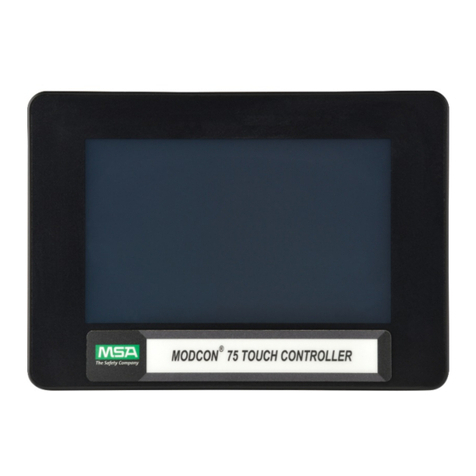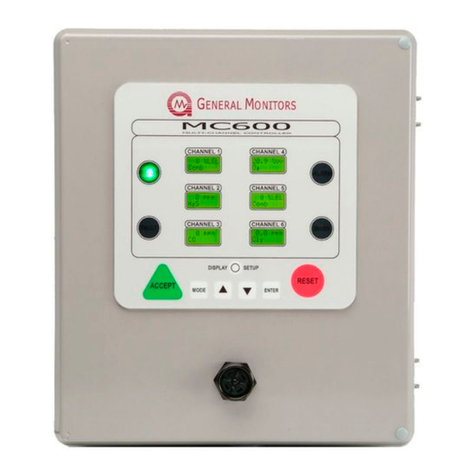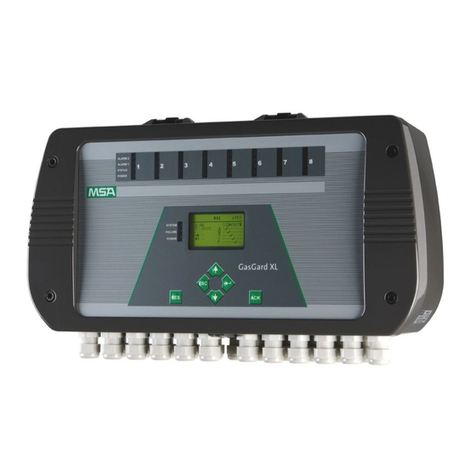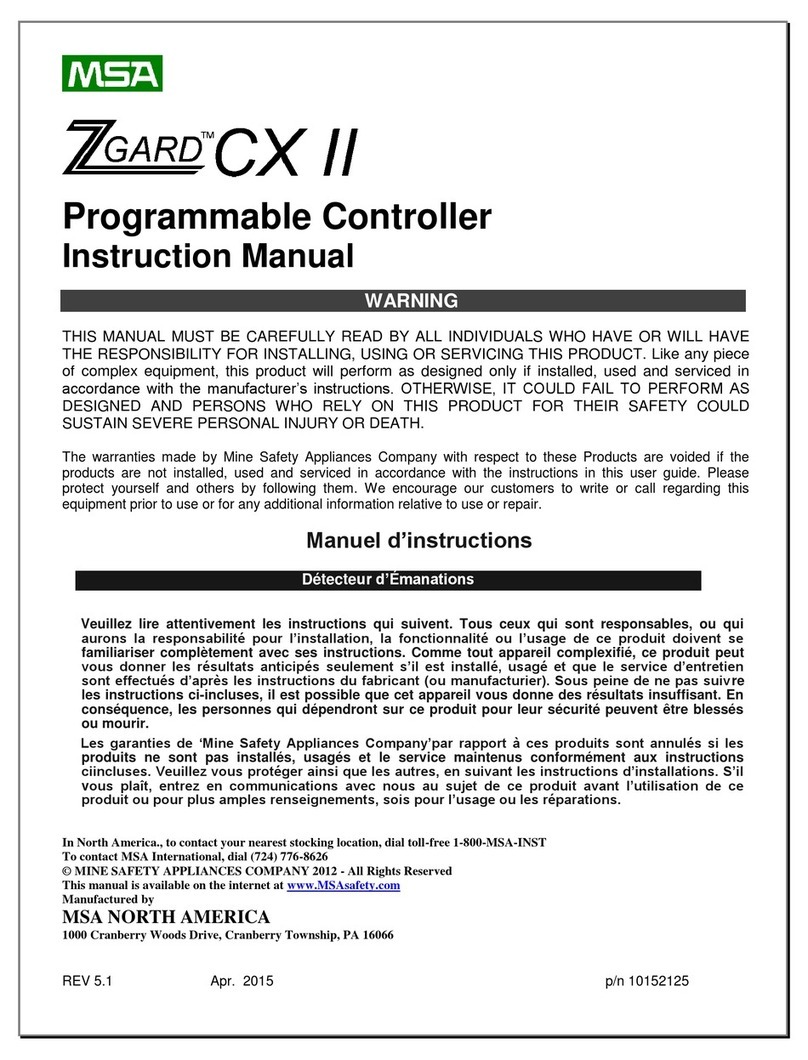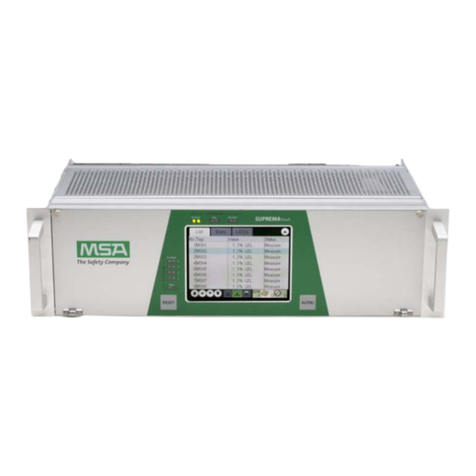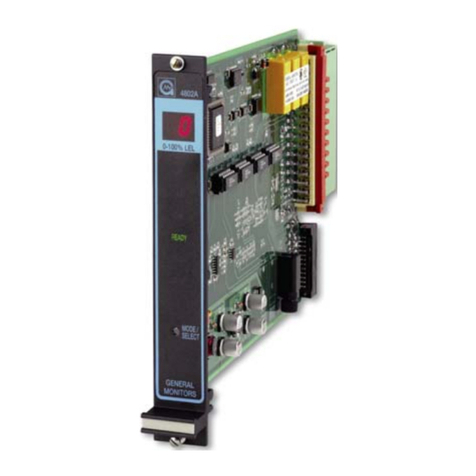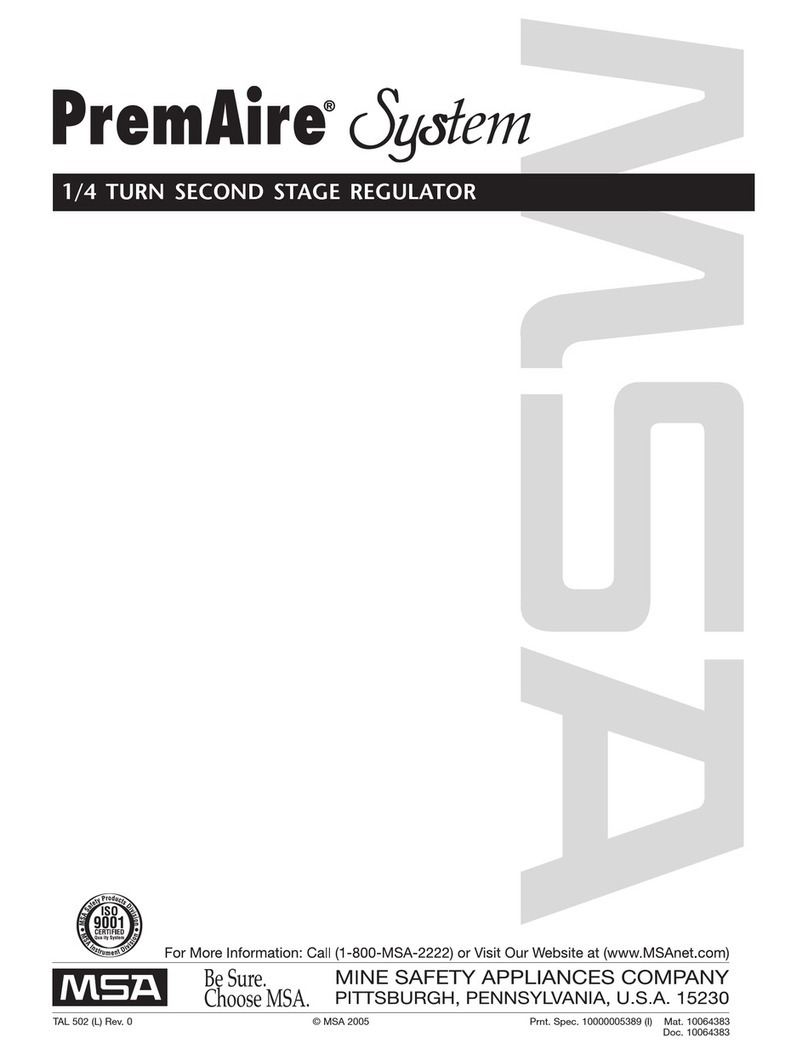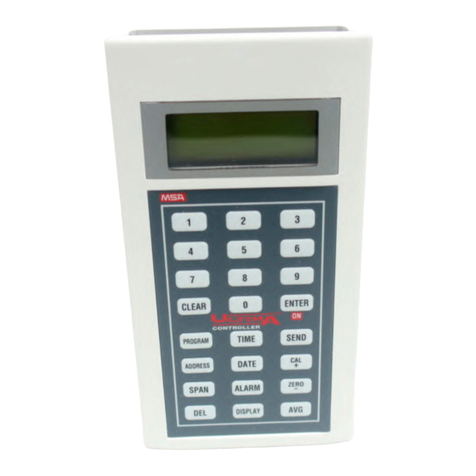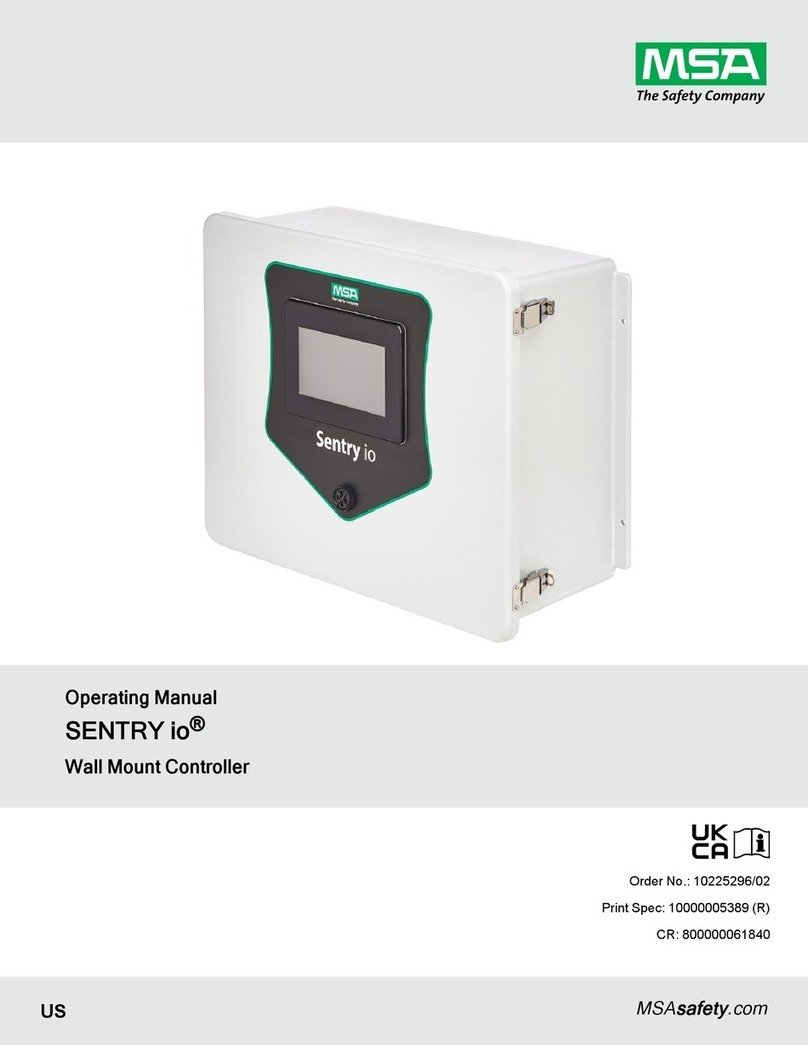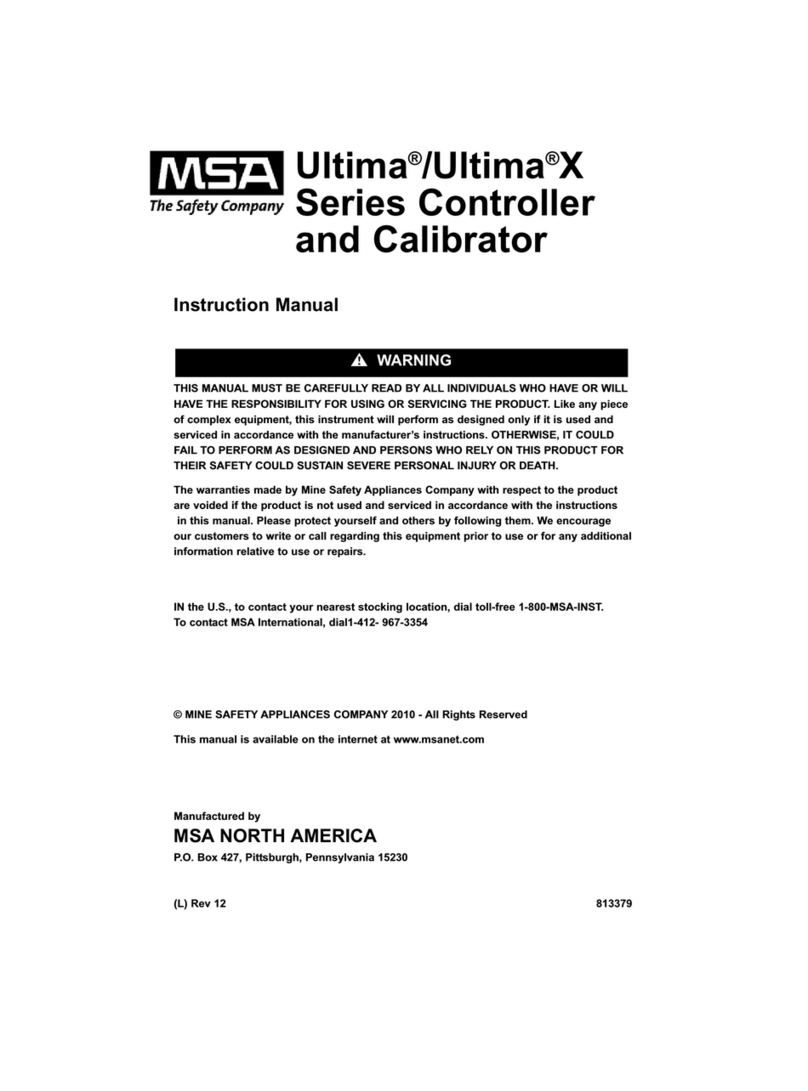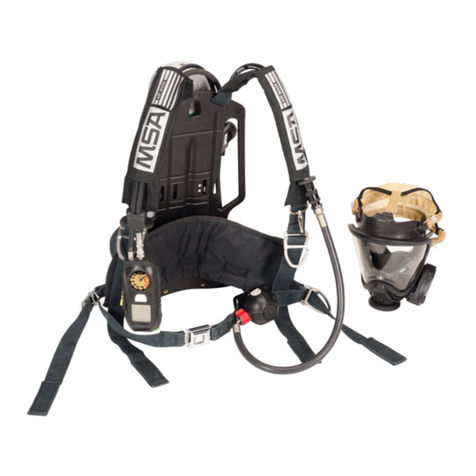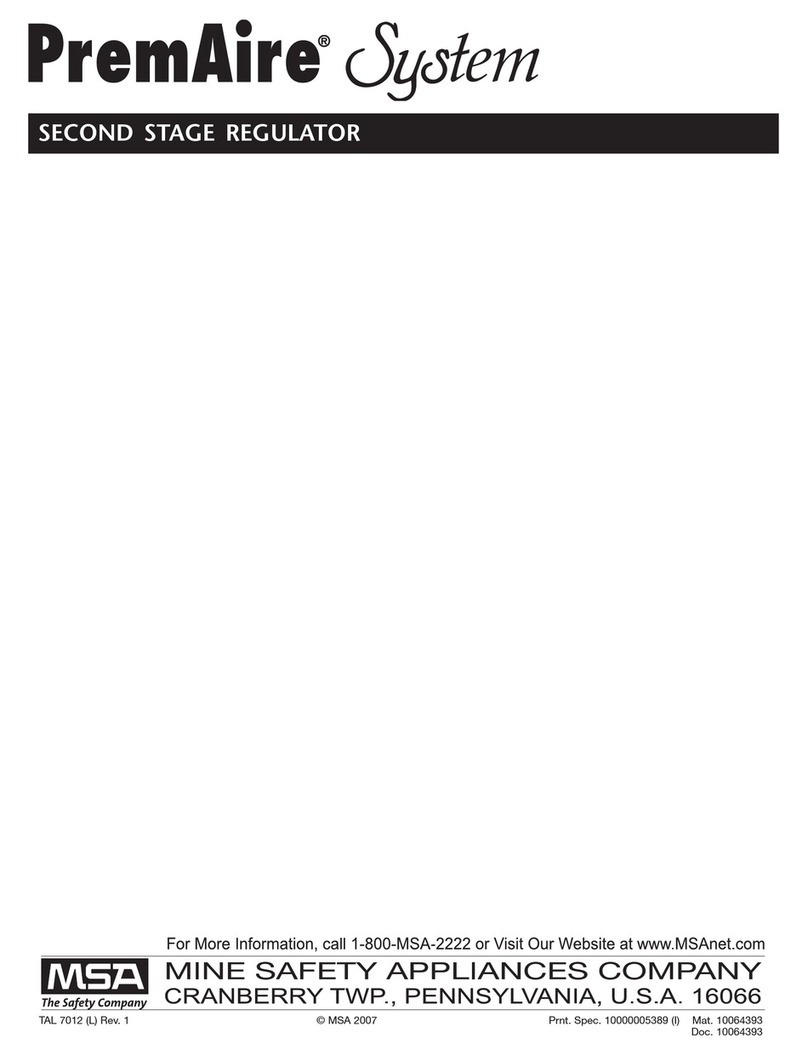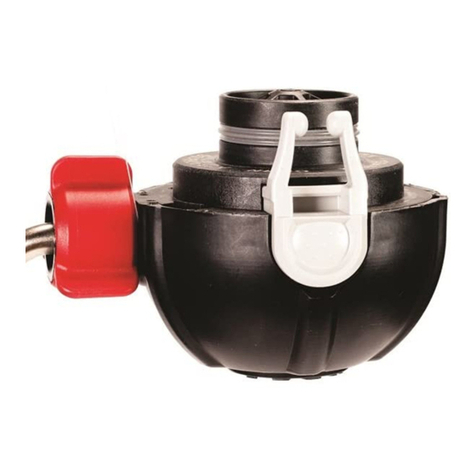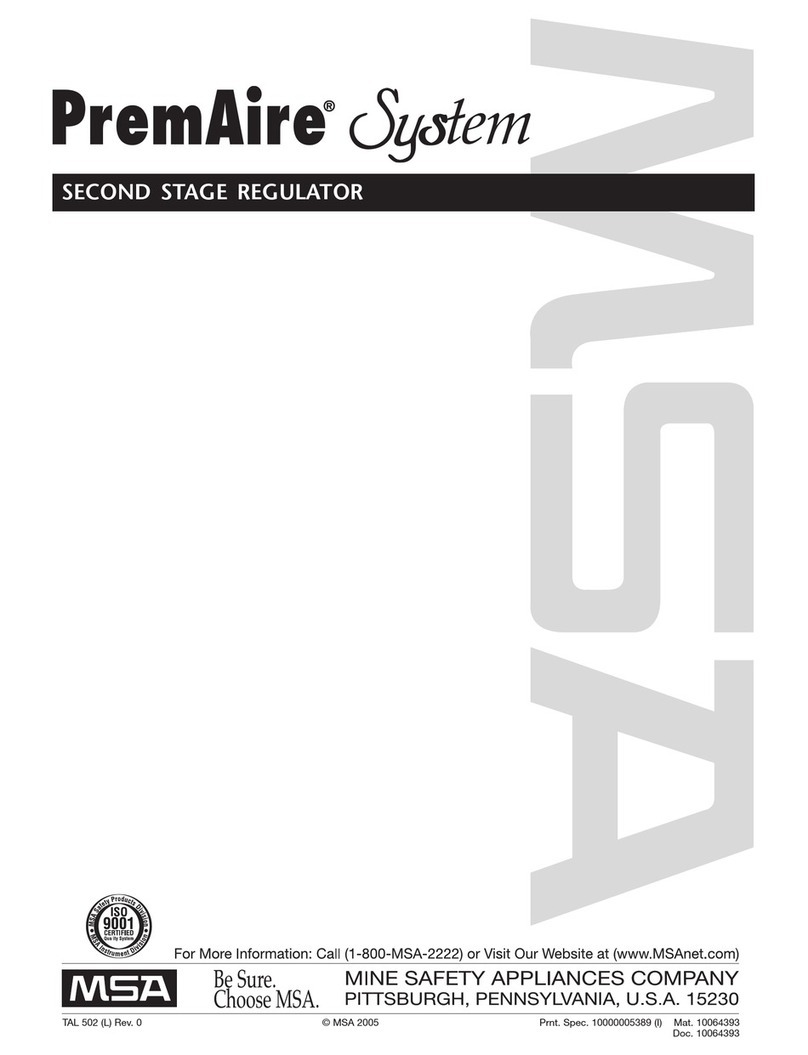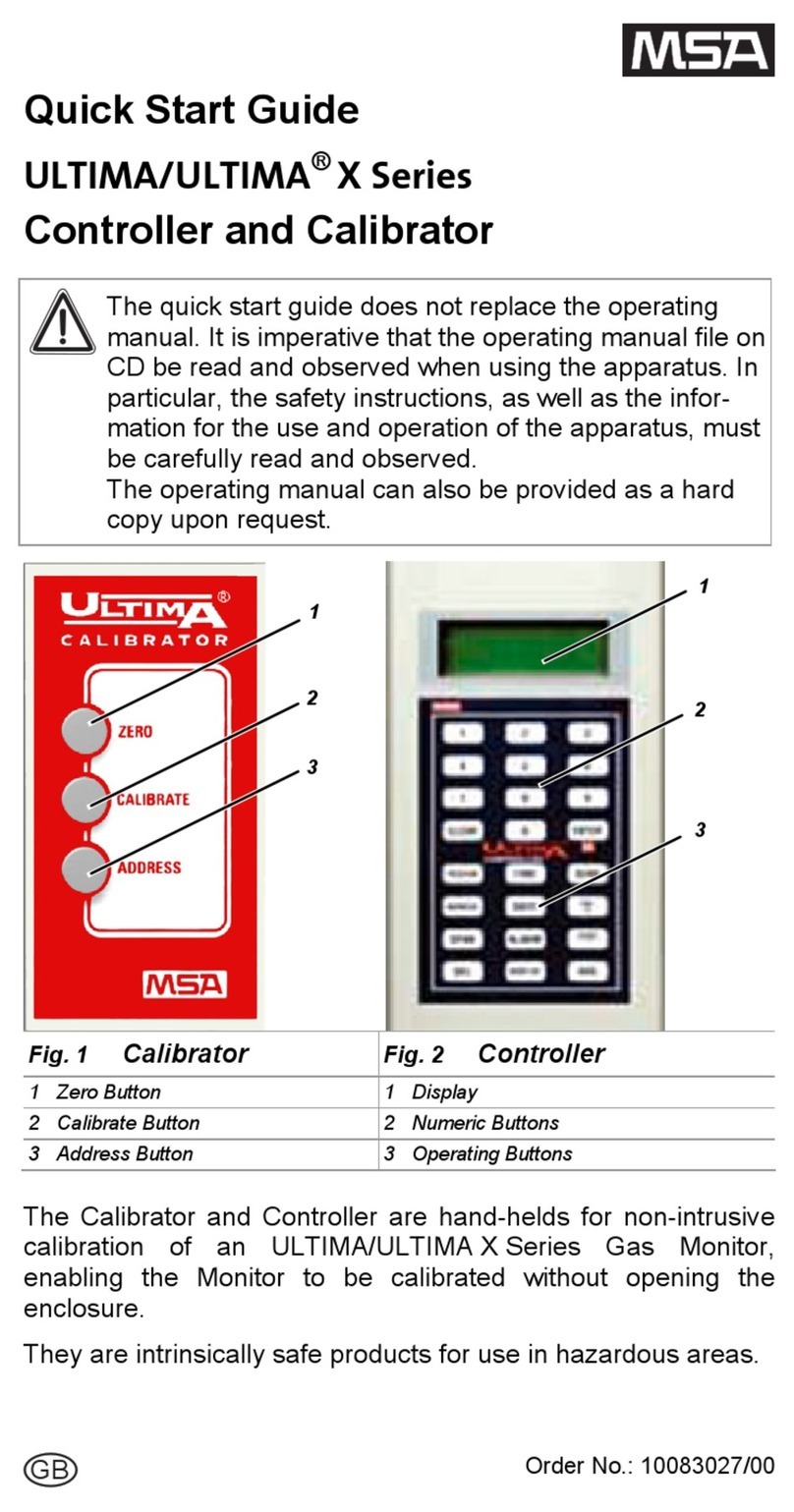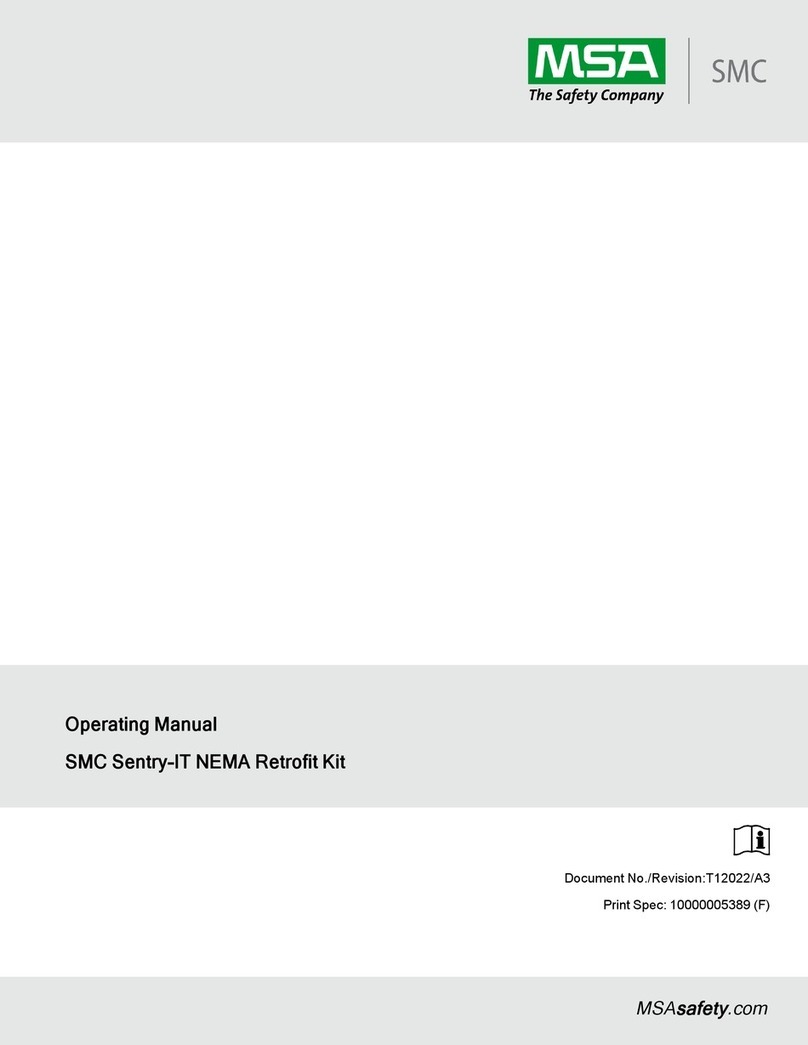
4 BVC-650 Ventilation Controller US
1 Safety Information
1 SafetyInformation
WARNING!
• Please read these instructions carefully and have easily accessible for the operation of the product.
• The information contained within this manual should be referenced for typical installation and operation only.
• For site specific requirements that may deviate from the information in this guide – contact MSA. If the equipment is
used in a manner not specified by the manufacturer, the safety/protection provided by the equipment may be
impaired.
• This device is designed for indoor operation only.
• Never ignore the device when in alarm or displays a fault condition.
• This device requires a continual supply of electrical power – it will not work without power.
• This device is not a substitute for proper installation, use and/or maintenance of fuel burning appliances including
appropriate ventilation and exhaust systems.
• The device is not intended for use in potentially explosive atmospheres.
• This device is not a fire suppression or safety system. Fire suppression or safety systems must be used as the
primary safety system for fire and smoke alarms.
Failuretofollowthesewarningscanresultinseriouspersonalinjuryordeath.
InformationonWasteDisposalforConsumersofElectrical&ElectronicEquipment:
When this product has reached the end of its life, treat as Waste Electrical & Electronics Equipment (WEEE).
Any WEEE marked products must not be mixed with general household waste, but kept separate for the
treatment, recovery and recycling of the materials used. Please contact your supplier or local authority for
details of recycling schemes in your area.
1.1 WarrantyStatement
MSA, the Safety Company, warrants that these products will be free from mechanical defect or faulty workmanship for a
period of three (3) years from the date of delivery, provided it is maintained and used in accordance with MSA's instructions
and/or recommendations.
This warranty does not apply to expendable or consumable parts whose normal life expectancy is less than three (3) year,
such as, but not limited to, nonrechargeable batteries, filament units, filter, lamps, fuses, etc. MSA shall be released from
all obligations under this warranty in the event that repairs or modifications are made by persons other than its own or
authorized service personnel or if the warranty claim results from physical abuse or misuse of the product. No agent,
employee, or representative of MSA has any authority to bind MSA to any affirmation, representation, or warranty
concerning the goods sold under this contract. MSA makes no warranty concerning components or accessories not
manufactured by MSA, but will pass on to the Purchaser all warranties of manufacturers of such components.
THISWARRANTYISINLIEUOFALLOTHERWARRANTIES,EXPRESSED,IMPLIED,ORSTATUTORY,ANDIS
STRICTLYLIMITEDTOTHETERMSHEREOF.SELLERSPECIFICALLYDISCLAIMSANYWARRANTYOF
MERCHANTABILITYOROFFITNESSFORAPARTICULARPURPOSE.
ExclusiveRemedy
It is expressly agreed that the Purchaser's sole and exclusive remedy for breach of the above warranty, for any tortious
conduct of the Seller, or for any other cause of action, shall be the repair and/or replacement at the Seller's option of any
equipment or parts thereof, which after examination by the Seller is proven to be defective. Replacement equipment and/or
parts will be provided at no cost to the Purchaser, F.O.B. Seller's Plant. Failure of the Seller to successfully repair any
nonconforming product shall not cause the remedy established hereby to fail of its essential purpose.
ExclusionofConsequentialDamage
The Purchaser specifically understands and agrees that under no circumstances will the Seller be liable to the Purchaser
for economic, special, incidental, or consequential damages or losses of any kind whatsoever, including but not limited to,
